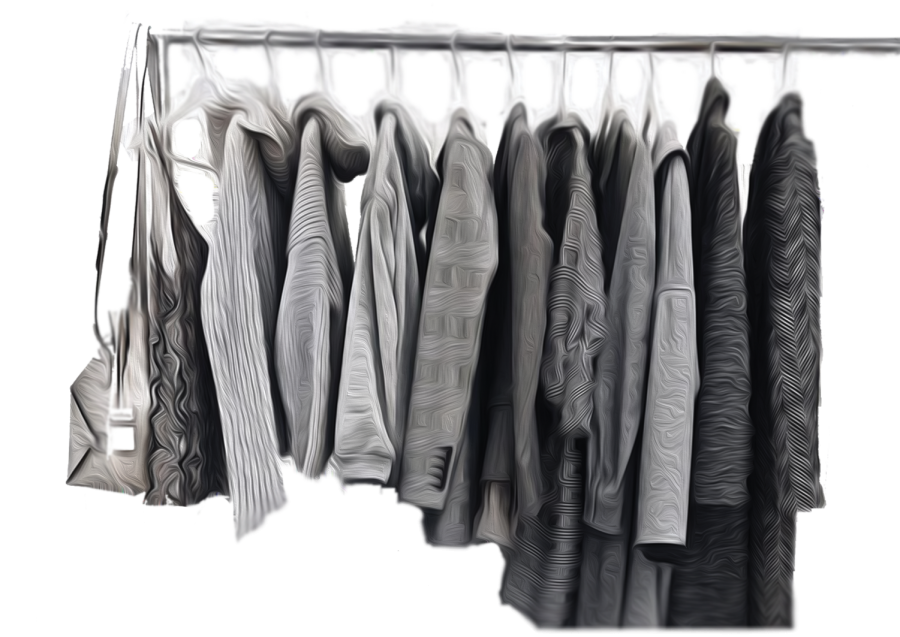In today’s age of being environmentally conscious and acting as in-depth environmental consumers, many are doing their best to combat the global destruction that climate change has caused. One big contributor to the climate change crisis has been fashion; in this case, it would be the category of “fast fashion.” Fast fashion is one of the leading factors in pollution, with clothing stores constantly releasing new products.
According to earth.com, “The fast fashion trend produces the same amount of carbon emissions every two minutes as would be produced by a car driving around the world six times. Everything from sourcing materials to producing collections to selling to washing and throwing away clothes produces emissions and impacts the environment.”
Brands like Forever21 and Fashion Nova are leading to pollution with fast fashion. Sustainability is a huge issue at CSUN in the family and consumer science major. This department houses the fashion majors and anything adjacent to the subject, and is set up in Sequoia Hall.
Professor Tracie Tung is one of the many professors in the department that cares deeply about the carbon footprint that we all leave when we buy clothes from the plethora of fast fashion stores that we walk into daily. Last semester Tung had a workshop that emphasized the necessity of being mindful when it came to how we shop. The workshop was titled “Make Compassion Your Fashion” and, as the flyer said, “There’s a new generation of clothing and accessory designers and manufacturers who are stitching sustainability into everything they do.”
“The U.S. Environmental Protection Agency defines sustainability as ‘the ability to maintain or improve standards of living without damaging or depleting natural resources for present and future generations.’ The fashion industry exhibits a complicated value chain. From fiber production, fabrication, finishing, retailing, to consumers. It is the second most polluting industry after oil,” Tung said to explain how she got into the forward-thinking community of sustainable fashion. “The more I learned about the fashion industry, the more I realized the dark side of the industry. The development of many sectors in the fashion industry has been depleting not only our planet but also people. Thus, as an educator, it is important for me to bring the awareness to consumers and students who will be the future leaders of the industry.”
When discussing tips for being fashionably sustainable, Tung breaks it down into eight simple steps:
1. Reduce consumption and buy fewer and higher quality items (purchase classic styles).
2. Consider buying the item if you’ll wear it more or less than 30 times.
3. Break the cycle: Slow fashion movement — slow down your fashion cycle.
4. Spread your money: Support companies who are working in different ways for a more sustainable and transparent fashion industry.
5. Detox your wardrobe: Choose natural and biodegradable materials (i.e. cotton, hemp, wool, silk, flax).
6. Care for your clothes (i.e. following the care instructions, washing jeans less frequently, etc.).
7. Repairing and/or altering clothes (i.e. upcycling).
8. Sharing fashions (i.e. clothes swap, clothes rental).
Professor Tung also explains the difference between the fast fashion manufacturing process versus other’s processes: “(The) apparel manufacturing process consists of several stages from market research/trend analysis, design development, style selection, marketing apparel line, preproduction, sourcing, apparel production, quality assurance, to distribution/retailing. In the past, the product development calendar is about four to 12 months. However, fast fashion retailers have shortened the production cycle to four to 12 weeks.”
Just from that reduction from months to weeks shows that fast fashion is extremely detrimental to the environment due to the harsh time crunch they put on their production process.
Lastly, Professor Tung spoke on the social equity in terms of how to maintain a sustainable lifestyle overall.
“Fast fashion retailers accelerate the fashion cycle as new fashions are introduced on a weekly basis,” she said. “Clothes become much more affordable and accessible. Currently, we are facing not only problems emerging in the manufacturing process, but also issues related to the consumers, such as over-consumption and textile waste. 13 million tons of garments are tossed every year. It’s equivalent to 200 T-shirts per person in the U.S.; 85% of garment and textile waste goes to landfills … To maintain a sustainable lifestyle, product developers should design products with their death in mind (how we can repair, reuse, and recycle the products). Also, we need to encourage people to take actions and to become sustainable consumers.”












